What's the best email client: Mail, Outlook, or Thunderbird?
11 min. read
Updated on
Read our disclosure page to find out how can you help Windows Report sustain the editorial team. Read more
Key notes
- Out of the countless email clients for Windows computers, the best ones are the Mail app, Outlook, and Mozilla Thunderbird.
- And that leaves the question of which of these apps is the best.
- This review breaks down which is the best email client and the one you should use.

The invention of email completely revolutionized the way we communicate as messages can be sent in an instant. And from its creation, many developers have sought to bring their spin to the email by creating clients and apps with unique features.
There are tons of apps and clients out there on the market, but the three that stand out as the best on Windows 11 are the Mail app for the OS, Microsoft Outlook, and Mozilla Thunderbird. These clients have the same thing going for them: an engaging user interface and interesting features beyond just doing email.
When choosing an email client, it’s important to consider what do you need in an app. Nowadays, clients don’t just do email anymore. Many have features that support businesses, while others have access to cloud services. But before going into what’s the best of the three, it’s important to list out some ground rules.
What do I need to look for in an email client?
Security and encryption features are among some of the most important aspects to look out for. Some web-based clients have their developers scan private emails and have control of your data. Most desktop clients have a higher degree of security and the ability to encrypt emails.
Another great feature to have is the ability to combine different email accounts into one client. Instead of running around checking all your accounts, it’s best to have everything centered. And finally, you should look out for app integration, which is how well it works with other applications.
Zoom, for example, is an extremely popular video conferencing app used by businesses everywhere. Email clients that allow Zoom to work with their service get major points in usability. With that said, let’s break down the Mail app, Outlook, and Thunderbird on Windows 11, and decide which one is the best for the operating system.
What is the best email client?
➡ Windows 11 Mail app

The Mail app on Windows 11 got a major overhaul for the new operating system, like a lot of the other native apps. In its newest iteration, Mail gained the ability to pin boxes of your choosing to the Start and the ability to mix different accounts into one single account.
This means you can have your Outlook, Gmail, and Yahoo accounts under one roof, eliminating a chaotic situation. It even took cues from social media as you can now tag people like on Twitter, customize your background, and some keyboard shortcuts.
The Mail app is decent enough, but it isn’t a proper client. It’s great at servicing as a central hub to allocate your email, messages, and calendar, but it lacks a lot of features you’d see on a proper email client. There’s no task manager, notes, web browsing capability, or other tools.
But if you want a simple and easy-to-use email service, then the Window 11 Mail app is just fine as it stands. You shouldn’t expect much out of the Mail app, but for some people, that’s a good thing.
➡ Mail app simplicity
The biggest strength of the Windows 11 Mail app is its user interface. It strips everything down its bare basics with no extra fluff. It has an inbox, an outbox, a Calendar, To-do, a section for individual direct messages, and a section for contacts. It’s all under one single heading. Having essentially no clutter on your screen is a great feeling; sometimes you just want to go to your email without having to fight your way throw a maze of menus.
The focus is all about the content and not stuffing as much menu together. Adding new accounts is easy to do with the ‘New mail’ button to the left. Down in the bottom left corner, you have buttons for the aforementioned Calendar, contacts list, and To-do feature. Smaller features include things like flagging emails or marking them as unread, support folders, and the ability to communicate with other select apps.
Admittedly, there isn’t a whole lot to talk about for the Mail app. What you see is what you get: a simple email app for people who just want to check their inbox. But that’s the beauty of this app. However, if you want something more robust and can do more, then Outlook is the way to go.
Microsoft Outlook
Outlook is a lot more feature-rich. It’s a proper email client made with professionals in mind and is a part of the Microsoft Office suite. It can organize your calendars, contacts, and notes, just to name a few. One of the best aspects of Outlook is how many apps it integrates with.
You can connect to other Microsoft apps like Word or Excel and a ton of third-party software. If you created a series of notes on Evert or Todoist, which are some of the best note-taking apps on Windows 11, you can transfer all that text over to Outlook with a few clicks.
Plus, you don’t need to be connected to the internet to use Outlook. As a client, you can use the app to jot down notes or add something to your schedule if the internet ever goes out. Outlook has a lot going for it.
The two major downsides are that you will have to pay to have all the features on Outlook and the user interface can be pretty confusing. Outlook has a lot going on at once, but the app does have a handy guide that teaches you how to use the software. Plus, there are tons of resources online to answer any question.
Outlook supports complexity
Getting into further detail, Outlook is good at dealing with complexity. Modern-day workflows have you deal with multiple accounts and tons of people it can get overwhelming. A ton of information is being thrown at you, but Outlook is prepared with tools to help you out.
First is a folder system that allows you to access any messages you have and deal with attachments efficiently. You can implement filters, labels, and threads to compartmentalize everything, The folders can be configured to automatically collect incoming items that match the criteria you laid out.
The potential mess of emails on Outlook can also be cleaned up with proper threading, flagging, and grouping, all of which are available. There’s also fast message searching if you want to locate that one specific email.
Outlook also has some great junk mail and phishing filters that automatically move that stuff to their appropriate folder, which is something the Windows 11 Mail app does not have.
Barebone features mean barebone features, and if you rely on the Mail app, you’ll have to trust Windows Defender or some third-party virus app to do the job. Outlook is also a frequent target for viruses so Microsoft has put a lot of effort into protecting its userbase.
On top of that, Outlook has the Social Connector which sends out frequent updates on what people are doing while you work. You can get to know what their status is, their activities, and which social media sites they’re on; all without having to open another window.
Best for power users
If you’re someone who lives and dies by their email account, then Microsoft Outlook is highly recommended. Being able to prioritize which tasks are the most important while keeping in constant contact with others on your work team is a game-changer.
You do have to ask yourself how much of a power user you are. Are you someone who doesn’t care about your email account so long as you get the message or are you someone who likes having all the extra bells and whistles? Or perhaps you’re someone who wants complete control over your email client. If this is you, then you should check out Mozilla Thunderbird.
Mozilla Thunderbird
Thunderbird is an open-source email client that is supported by a large community. It carries some similar features as Outlook like the app integration and the ability to work without an internet connection.
It has a chat feature that enables you to talk with your contacts on a variety of platforms, be it Facebook Chat, Google Talk, IRC, what have you.
If you’re someone with the knowledge and patience to customize your client however you please, then Thunderbird is the best one. What features are available are up to you, so for people who want their software to work right from the get-go, this client may not be for you.
Mozilla updates Thunderbird from time to time, but they’re slow on the upkeep and some may find the user interface old and outdated. Plus, some basic features are not included in Thunderbird: you’ll have to add them yourself.
Create your own email client
The biggest boon to Thunderbird is open it is to customization. Because it’s open-source, you configure the client to suit your needs. It supports many different types of protocols be it POP3 for retrieving email, IMAP which allows you to add your extensions, LDAP for address completion, and OPEN PFP for encryption. Thunderbird can also support files up to 2 GB for free and you don’t even need an account.
As for add-ons, the sky’s the limit. There are tons of extensions and themes available that change the color scheme or the button layout. Powerful security features are supported such as digital signing, encryption, password manager, and spam filters. Chat apps like XMPP and Google Talk can be implemented too with the proper extension.
Honestly, there are so many extensions available for Thunderbird that it’s close to impossible to list all the different kinds out there. For the sake of making it easy, below is a small guide that will show you how to add extensions on Thunderbird.
Adding extensions on Thunderbird
- Open the Thunderbird email client.
- Click on the three lines in the upper right hand corner.
- In the drop-down menu, select Add-ons and Themes.
- In the search bar at the top, search for an extension you’re interest in, such as a spam filter.
- Select a spam filter that looks good to you or based on the reviews. Click the Add to Thunderbird button.
- It will ask for your permission to add it.
- If you go back to Add-ons and themes, you will see the new extension added.
So, which is the best?
The best one depends on what you as the user needs and want. The best one out of these three is Microsoft Outlook. It has the best of both worlds by having a simple enough user interface, lots of features that you can purchase, and enough business support for the modern professional.
But Outlook has its weakness. It’s cluttered, can be confusing to use, and is filled with necessary features. On the other hand, you can argue that it has too few features; it depends on how you look at things. If you’re looking for something much more casual for personal usage or you don’t need anything complex, then the Windows 11 Mail app is a better fit.
The Mail app is so easy and friendly that you can do all of your work on it with no problem. Sometimes the extra bells and whistles are just junk cluttering your space.
If you want total control over your email client and customize it however you want, then Thunderbird is the best one. It has the potential to have the best security measures out of the main three and the most customization options; all of them free. However, it will take time to figure all this stuff out.
Admittedly, it’s difficult to recommend Thunderbird, because of how much time and technical knowledge you’ll need to make the most out of it. It’s fine, but do you want to spend extra time and energy putting together your email client when you can just use one right out of the box? Most people don’t and would rather use it from the get-go.
So, the ranking is as follows:
- First place: Microsoft Outlook
- Runner-up: Windows 11 Mail
- Worst: Mozilla Thunderbird
Are there apps for Windows 11 that I should look into?
To keep in line with the theme of this review, you should look into getting yourself a good email client. We’ve established that Outlook is the best one, but perhaps you have a situation where it still isn’t. There are tons of options out there. You should look into Flow Mail, Inky, and Mailbird as alternatives.
While you’re improving your office experience, you may want to look into getting a third-party calendar. Most people won’t think much about their Windows 11 calendar, but some apps bring unique features that make event management so much easier.
Feel free to leave a comment below if you have any questions on other Windows 11 apps. Also, leave comments about what reviews you’d like to see or information on other Windows 11 features.
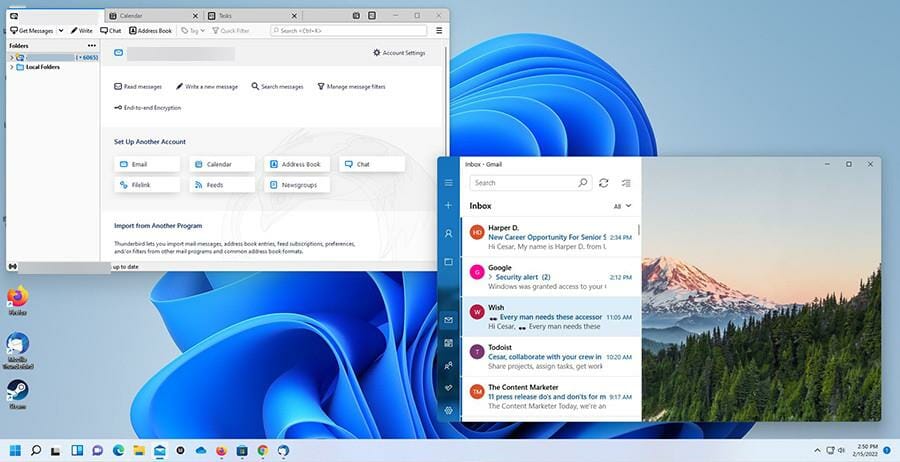


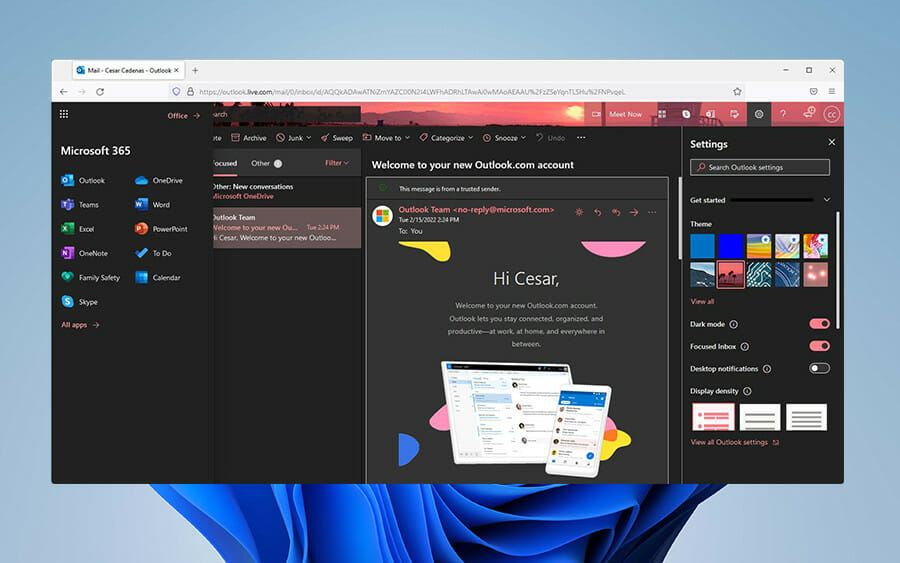

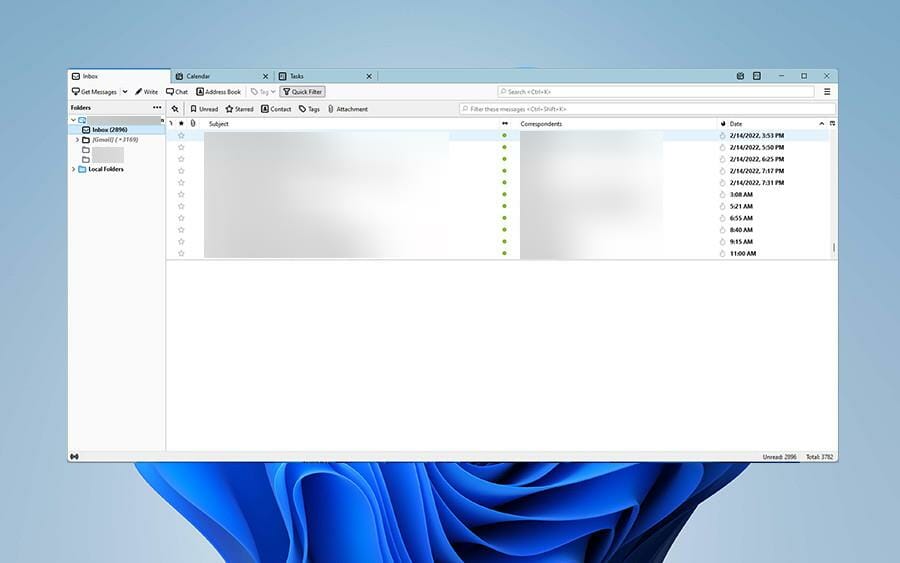






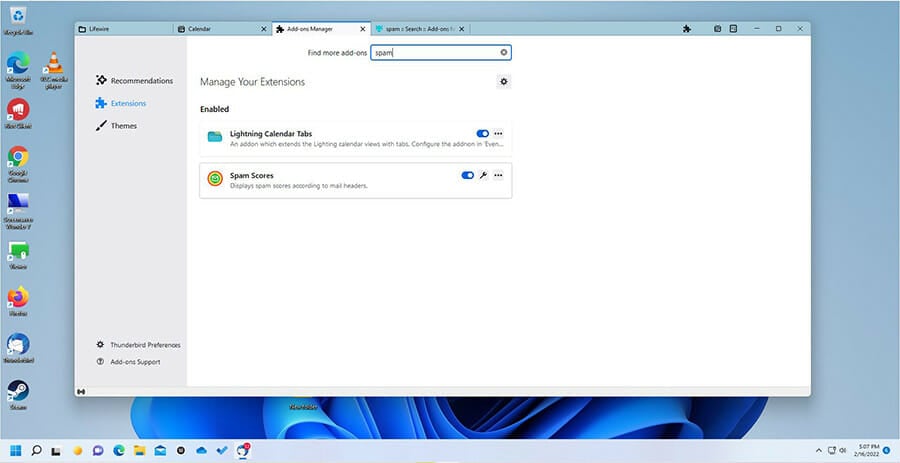
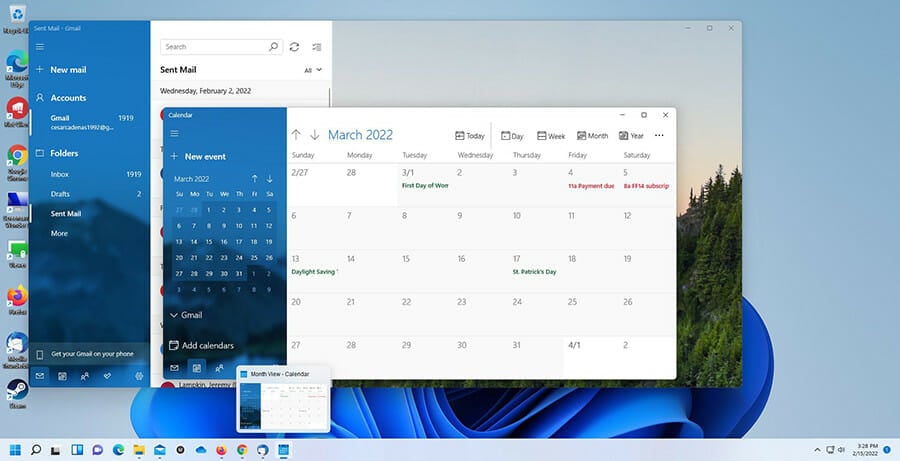
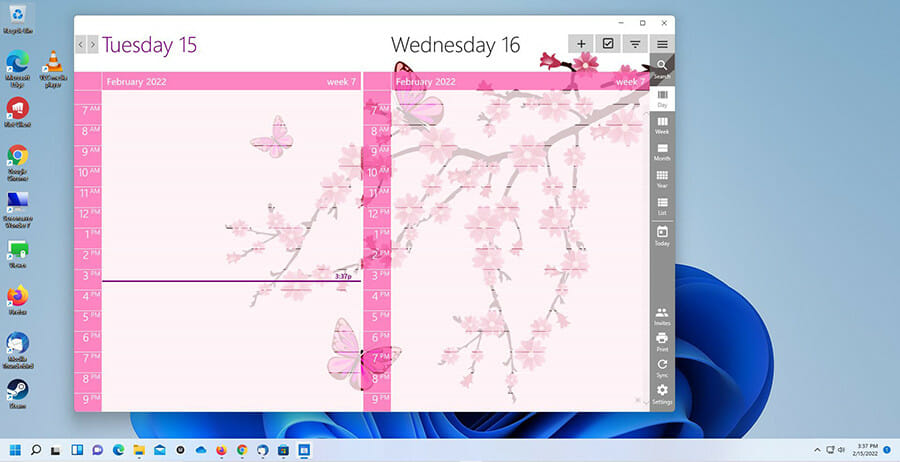








User forum
2 messages